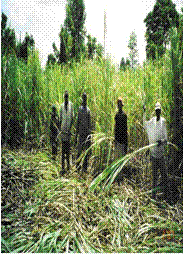

Sugar and Slavery
nBrazil became the world's leading sugar producer, becoming the first plantation colony.
nIn its social hierarchy white planter families dominated colonial life.
nSlaves, comprising about one-half of the total population at the close of the 17th century, occupied the bottom level.
nIn between was a growing population of mixed origins, poor whites, Indians, and Africans who were artisans, small farmers, herders, and free workers.
nPortugal created a bureaucratic administration under a governor general that integrated Brazil into the imperial system.
nRegional governors often acted independently and reported directly to Lisbon.
nMissionaries had an important role; they ran ranches, mills, schools, and church institutions.
nDuring the 17th century Brazil became the predominate Portuguese colony remaining closely tied to Portugal.
